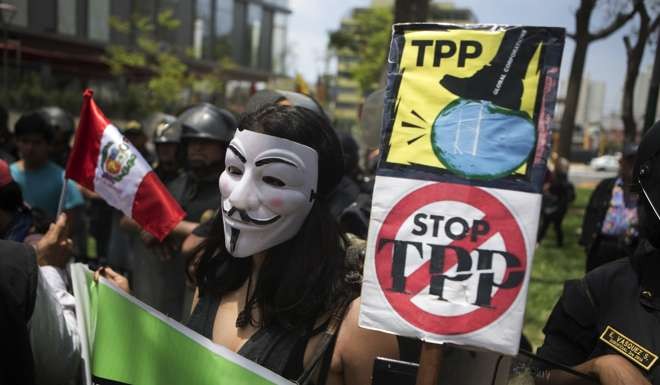
As TPP falters, China steps up charm offensive to woo Asian nations on board Beijing-led trade pact
China-led deal offers more practical benefits to developing nations than US-led agreement, says official

Beijing has stepped up its charm offensive to woo Asian countries on board what it deems an alternative, more practical trade pact backed by China after the prospects of a “high standard” US-led deal for the region diminish.
A good trade deal is not about whether its standards are high or not, it is about whether it is workable for member countries, said Tan Jian, a senior Chinese delegate attending the Apec summit in Lima, Peru.
Tan was comparing the China-backed Regional Comprehensive Economic Partnership (RCEP) and the US-led Trans-Pacific Partnership (TPP), a key pillar of the Obama Administration’s pivot to Asia strategy that US president-elect Donald Trump is likely to withdraw from after taking office.
The RCEP would be a better choice to promote Asia-Pacific integration than the TPP, Tan told reporters on the sidelines of the two-day Asia-Pacific Economic Cooperation summit.

An ideal trade deal “should be good for developing countries to be able to trade”, the Chinese official said. “That’s my criteria ... I don’t think a high standard is necessarily good.”
Analysts said the TPP represented the Obama administration’s efforts to bring international trade rules to the next level by setting stricter requirements on labour rights, a level playing field between state-owned enterprises and private firms and the free flow of information and data across borders, areas that China was likely to prove unwilling to meet.
The TPP involves countries such as Japan, Vietnam, Australia and Peru, with China a notable absence.
China, on the other hand, is endorsing alternative pacts, mainly the RCEP, to counterbalance the TPP.
Unlike the TPP, the China led-deal is not about setting up ambitious new free trade rules but extending existing agreements to cover the 10-member Asean regional bloc, plus China, Japan, South Korea, Australia, New Zealand and India.
RCEP is already gaining in popularity after it became clear that the US will not endorse the TPP once Trump takes office.
Peru said that it had started negotiations to join RCEP last week and Chile also confirmed that it had expressed an interest in joining. Meanwhile, Japan, a keen member of the TPP, also said it would ramp up efforts on negotiations to join RCEP.
Tan at the Chinese foreign ministry also highlighted the role of Southeast Asian nations in RCEP.
“China will always respect the core role of the Association of South East Asian Nations ... to work together with different parties and we also hope that the negotiations will be concluded as soon as possible,” he said.
When asked about the rivalry relationship between TPP and RCEP, Tin said China was open to any free trade agreement as long as it was “open, transparent and inclusive” and not “politicised”.
“I think when you have discussions about the economy, but if you begin to talk about security value or strategic value during trade deal negotiations, I don’t think that’s an appropriate way.”